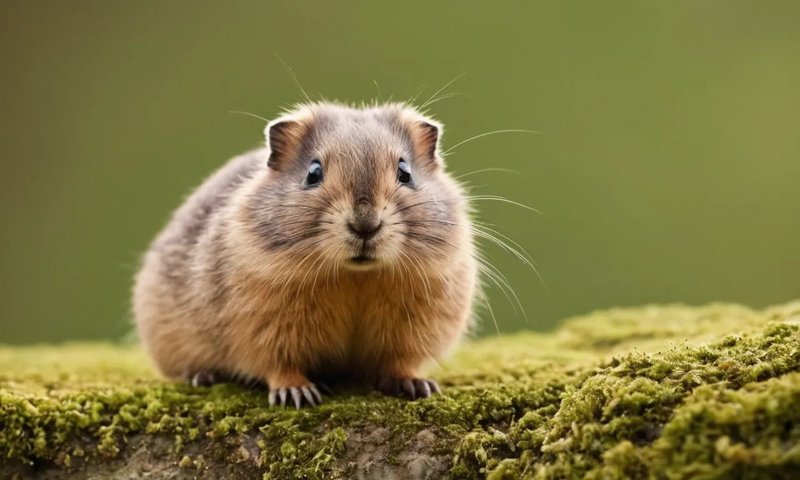
Imagine we’re sitting in a cozy café, sipping on our favorite drinks, and I point out how these creatures have influenced everything from cartoons to video games. You might be surprised to learn that lemmings, especially in the way they’ve been portrayed, tell us a lot about human behavior and society. They’ve become a metaphor for the herd mentality—a reminder of how people sometimes follow each other blindly without questioning where they’re going. So, let’s dive into the various ways lemmings are represented in culture and folklore.
The Myth of Mass Migration
One of the most persistent myths about lemmings is the idea that they engage in massive suicide leaps during migration. This misconception became popularized by a documentary in the 1950s that filmed lemmings seemingly jumping off cliffs. While it makes for dramatic storytelling, it’s not accurate. In reality, lemmings do migrate, but they’re driven by food scarcity or population pressures, not a collective urge to perish.
Here’s the thing: people often latch onto vivid stories, even if they’re not true. The lemming myth serves as an example of how easily misinformation can spread. It’s intriguing to think about how this idea has evolved from simple misunderstanding to a cultural trope—one that warns about the dangers of following the herd without thinking.
Lemmings in Literature
When you look through literature, lemmings pop up infrequently but with intention. They often symbolize the idea of following the crowd or the instinct to conform. Writers use these creatures to reflect on deeper themes like identity, autonomy, and societal pressures.
For instance, in some stories, the lemming represents individuals who lose their way, succumbing to external influences. An author might illustrate a character who, much like the lemmings, blindly rushes towards a goal without stopping to think. This portrayal taps into universal feelings of anxiety about conformity and the search for individuality. It invites readers to reflect on their own choices—are they making decisions independently or just going along for the ride?
Lemmings in Pop Culture: From Animation to Gaming
If you’ve ever seen the classic video game “Lemmings,” you know that these little creatures are often depicted as cute, albeit clueless. Players are tasked with guiding them to safety through a series of obstacles. This game cleverly plays into the lemming myth by presenting them as both endearing and a bit hapless.
In animations and television shows, lemmings are often portrayed humorously. They’re shown in groups, getting into mischief, and sometimes leading each other into hilarious mishaps. This reflects how media can take a simple animal and turn it into a metaphor for our own social behavior. As audiences, we laugh at their antics, but we also recognize the warning: blindly following others can lead to trouble.
Folklore and Cultural Beliefs
Different cultures hold various beliefs regarding lemmings, often rooted in environmental conditions. In some Arctic cultures, lemmings are part of traditional stories that convey lessons about nature and survival. They symbolize adaptability and the harsh realities of life in extreme conditions, teaching lessons about resilience and resourcefulness.
You might be surprised that in some regions, lemmings are considered good luck. Their appearance can signal a prosperous season ahead. This showcases how animals are often viewed through the lens of human experience, reflecting our values, fears, and hopes. It’s interesting how the very same creature can symbolize both folly and fortune depending on the story being told.
The Herd Mentality: Lessons from Lemmings
The concept of the herd mentality often draws parallels with the behavior of lemmings. People tend to follow others, especially in unfamiliar situations, which can lead to poor decision-making. Lemmings, in this context, become a cautionary symbol reminding us to think critically rather than just following the crowd.
This symbolism extends into social psychology, where the lemming phenomenon is studied to understand group dynamics. Why do we sometimes ignore our instincts or beliefs? Exploring stories about lemmings invites deeper discussions about autonomy and personal responsibility. It nudges us to consider our actions and the motivations behind them.
Modern Interpretations in Media and Art
In contemporary art and media, lemmings continue to inspire creators. Artists and filmmakers use them as symbols in pieces that critique societal norms or comment on environmental issues. Their plight highlights the consequences of groupthink, and artists often use this metaphor to explore broader themes like climate change and survival.
Several animated films depict lemmings not just as cute features but as characters with thoughts and emotions. By humanizing them, creators challenge viewers to empathize with the struggles these little creatures face, urging a reflection on our own societal challenges. This evolution from a simple rodent to a layered symbol demonstrates the power of storytelling in shaping our understanding of the world.
So, what’s the takeaway when it comes to lemmings and their representation in culture and folklore? These small creatures remind us of the importance of questioning the herd mentality, embracing individuality, and understanding our connections to nature. The narratives surrounding lemmings not only entertain but also encourage self-reflection about our choices and behaviors.
In a world that often pushes us to conform, the story of the lemming serves as a gentle nudge to think for ourselves. Whether in literature, art, or media, the legacy of the lemming continues to spark conversations about community, individuality, and consciousness. So next time you hear about lemmings, remember: they’re more than just cute little animals—they’re a window into our own human experiences.

